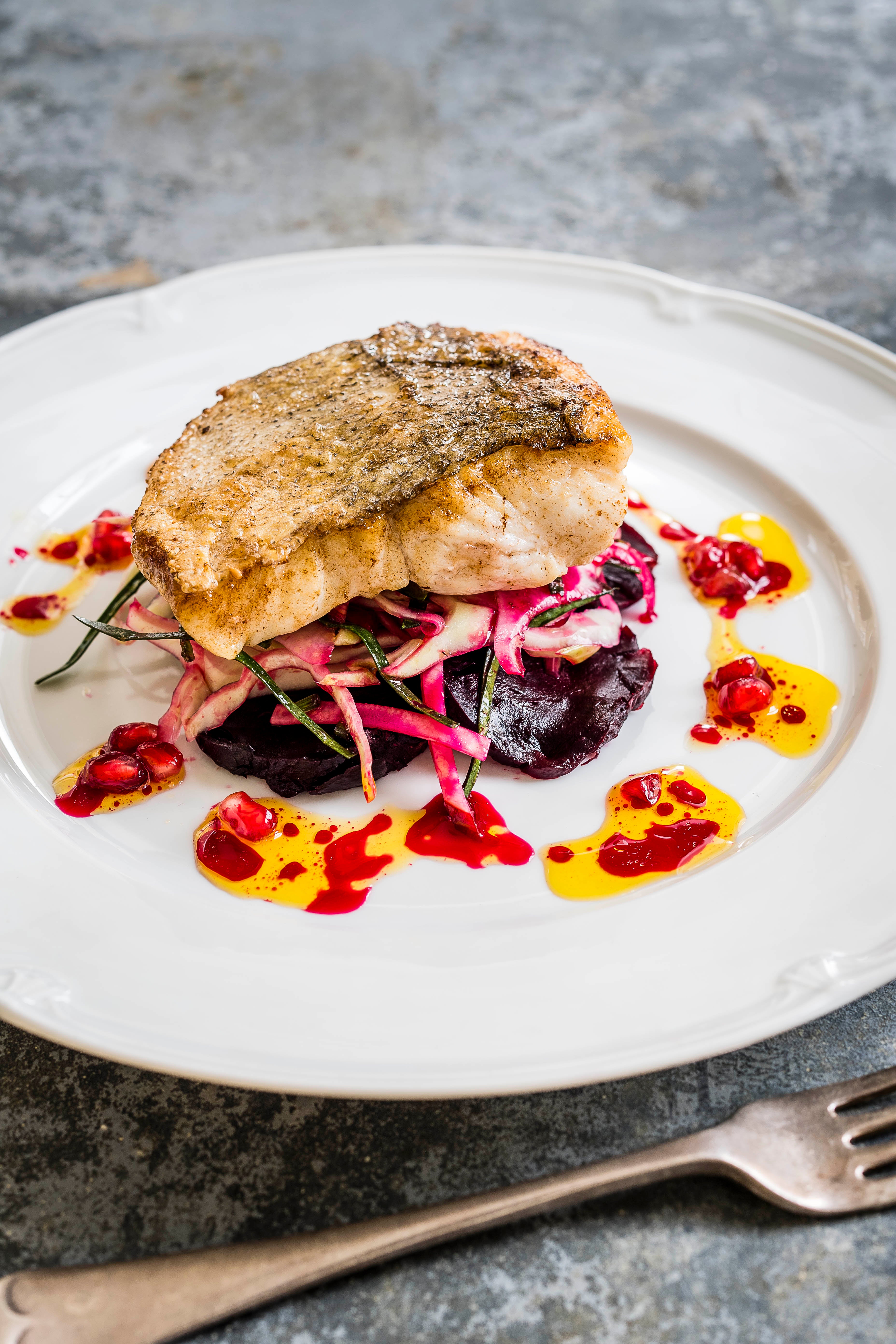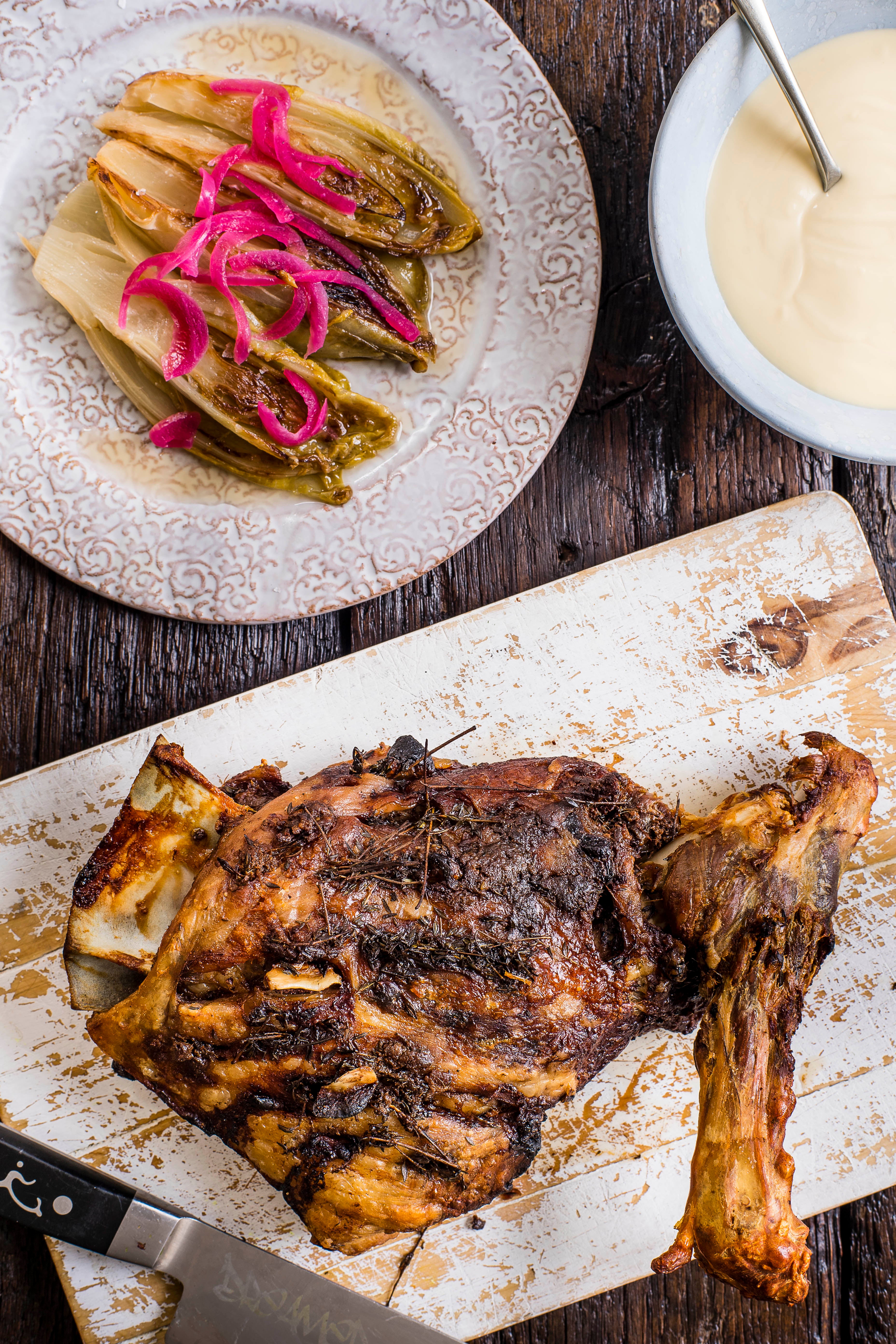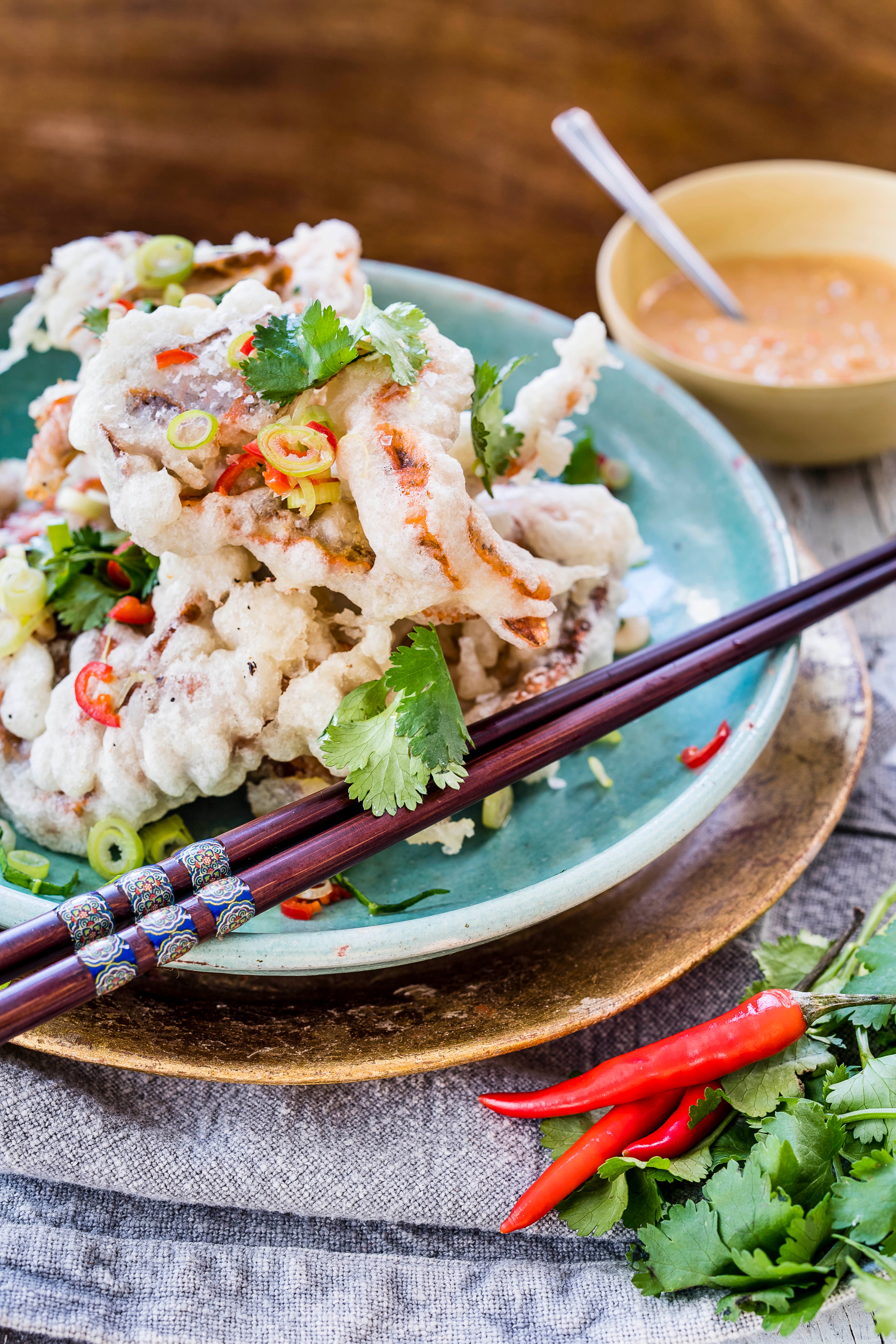
Your support helps us to tell the story
In my reporting on women's reproductive rights, I've witnessed the critical role that independent journalism plays in protecting freedoms and informing the public.
Your support allows us to keep these vital issues in the spotlight. Without your help, we wouldn't be able to fight for truth and justice.
Every contribution ensures that we can continue to report on the stories that impact lives

Kelly Rissman
US News Reporter
The cusp between summer and autumn brings that moment when our palates begin to shift, trading the bright, refreshing tastes of sun-kissed produce for something deeper, more soulful.
With the days getting shorter and that crispness creeping into the air, our cooking naturally evolves, calling for dishes that bridge the seasons with grace.
Enter Jack Stein, whose recipes masterfully embody this transition, blending the vibrancy of summer with the comforting heartiness that autumn demands.
Stein, the heir to a culinary legacy, draws from his travels and the finest British produce to create dishes that speak to the changing rhythm of the year.
His soft-shell crab salad, a fleeting nod to the last gasp of summer, sits alongside heartier fare like lamb shoulder with white miso cream and chicory – an ode to autumn’s richness.
These trans-seasonal recipes offer a roadmap for this delicious in-between time, where light meets warmth, and summer slowly bows to autumn’s embrace.
Hake with winter salad

“We were filming a Christmas special for the BBC and a winter fish salad was urgently needed. Under pressure the creative juices began to flow, and I figured that a take on a Christmas wreath would go down well. So, I picked my colours – the reds and dark greens – and looked towards beetroots, pomegranates and dark green winter leaves. This recipe is the result. I think it looks spectacular and makes a great first course at Christmas.”
Serves: 4
Ingredients:
6 medium-sized beetroots, peeled
A pinch of caster sugar
1 strip of lime zest
1 strip of lemon zest
2 garlic cloves
2.5cm piece of cinnamon stick
100g red cabbage, finely shredded
100g white cabbage, finely shredded
50g kale or cavolo nero, finely shredded
A small bunch of chives, chopped
A small handful of fennel fronds
1 tbsp sea purslane leaves (optional)
A small bunch of sea beet leaves, finely shredded (optional)
4 (100g) pieces of hake fillet
25g butter
50ml dry white wine
100ml fish stock
Sea salt flakes
For the dressing:
3 tbsp beetroot juice (from the cooked beetroots)
2 tbsp cider vinegar
3 tbsp rapeseed oil
½ pomegranate, seeds only
Salt
Method:
1. Place 2 of the beetroots in a small pan with the sugar, a good pinch of salt, the lime and lemon zest, and the cloves and cinnamon. Cover with cold water, bring to the boil, lower the heat and leave to simmer very gently for 1 hour or until tender when pierced through to the centre with a fine skewer. Remove the cooked beetroots and set them aside to cool.
2. Meanwhile, roughly chop the 4 remaining beetroots and blend in a food processor to a smooth purée. Tip the purée into a sieve set over a bowl and press out all the liquid with the back of a spoon or a spatula. This should yield about 75ml of liquid. Set this aside for the dressing.
3. Cut 1 of the beetroots into thin slices, then cut these into fine matchsticks. Mix the shredded cabbages, chives, fennel fronds, beetroot matchsticks and the sea purslane and sea beet (if using) together in a large bowl. Set this aside.
4. Season the hake on both sides with salt and set aside for 10 minutes.
5. Meanwhile, for the dressing, whisk the beetroot juice with the vinegar, oil and some salt to taste. Set aside.
6. To cook the hake, first melt the butter in a non-stick frying pan large enough to hold the fish comfortably side by side. Pat the hake dry with kitchen paper, add to the pan, skin side down, and cook over a medium-high heat until pale golden brown (1-2 minutes). Turn the pieces over, add the white wine and fish stock to the pan, cover and cook for another 2-3 minutes, until cooked through. Keep warm.
7. To finish the dressing, whisk 2 tablespoons of the cooking liquid from the fish pan into the beetroot dressing and season to taste with salt. Add 4 tablespoons of the dressing to the cabbage salad and mix until well combined. Stir the pomegranate seeds into the remaining dressing.
8. To serve, thinly slice the remaining cooked beetroot and overlap the slices to form a disc in the centre of each serving plate. Place a 10-12cm cooking ring in the centre of a beetroot disc and fill with the salad mixture. Carefully lift the ring off and repeat for each of the remaining plates. Place a piece of fish on top of the salad and spoon the dressing and pomegranate seeds around to finish.
Lamb shoulder with white miso cream and chicory

“Braised chicory is one of the first things I was taught to cook in a traditional French way by section chef Ben Towill at The Seafood Restaurant. He had just come from Raymond Blanc’s Le Manoir Aux Quat Saisons and was a real influence on me at the start of my career. When it comes to chicory, you cut and trim them and then fry them in a little oil and butter to colour and then finally braise them in stock; this prevents the leaves from oxidising and changes the bitter note to a sweet one. The white miso cream in this recipe is addictive and simple; it complements the lamb and chicory perfectly. And the lovely pink pickled onions make the dish look so appealing.”
Serves: 4
Ingredients:
2kg lamb shoulder
6 garlic cloves, peeled but left whole
6 sprigs of thyme, cut in half
6 anchovies, cut in half
1 tbsp olive oil
4 chicory
1 tbsp vegetable oil
60g butter
500ml chicken stock
Juice of 1 lemon
1 tbsp salt
Sea salt
For the white miso cream:
300ml double cream
300ml chicken stock
1 tsp white miso paste
50g butter
To serve:
1 red onion, pickled
Method:
1. Preheat the oven to 200C fan (220C/gas mark 7)
2. Make about 10 cuts in the lamb shoulder and push the garlic, thyme and anchovies into the cuts. Season with 20g salt, rub with the olive oil, and roast in the oven for 30 minutes. Lower the temperature to 140oc Fan (160C/gas mark 3) and cook for another 2½ hours.
3. Cut the chicory in half lengthways and remove the core (which is bitter). Brown them, cut side down, in a pot with the vegetable oil for 5 minutes. Add the butter and cook for 1 more minute. Now add the stock, lemon juice and salt, and turn the chicory halves over. Put a lid on and braise over a low heat until soft (20 minutes).
4. Now make the miso cream. Pour the double cream and stock into a pot; add the miso paste and whisk together. Cook over a medium-high heat, whisking occasionally. Keep on the heat until reduced by half, then remove from the heat and whisk in the butter. Pour into a serving dish.
5. Serve the lamb shoulder on the bone and carve at the table.
6. Place the chicory alongside each serving, topped with slices of pickled red onion and pass round the dish of miso cream.
Crispy soft-shell crab salad with peanut chilli sauce

“We get soft-shell crabs for just a few glorious weeks in the summer, brought in to us by a great local forager called Taff. We have had them on the menu for years. One of the joys of the soft-shelled crab is that you can eat the whole thing, shell and all. But the good news is that you don’t have to have a Taff to hand as these crabby delights can be ordered online all the year round. They can be expensive, however, so if you cannot source them just use some white crab meat to top the salad instead, as it works just as well with this delicious peanut chilli sauce.”
Serves: 4
Ingredients:
For the peanut chilli sauce:
50g tamarind pulp
3 medium-heat red chillies
50g ginger, peeled
75g peanuts, roasted
½ head of garlic, cloves peeled
35ml rice wine vinegar
25ml ponzu or lime juice
2 tbsp vegetable oil
For the salad:
3 lemongrass stalks
2 kaffir lime leaves
A bunch of coriander, leaves only
4 spring onions, thinly sliced
1 red chilli (mild, medium or hot, according to taste), sliced
1 tbsp sesame oil
1 tsp lemon juice
100g cornflour
100g plain flour
A good pinch of sea salt
Soda water, ice cold
12 soft-shell crabs
Method:
1. First make the peanut chilli sauce. Extract the juice from the tamarind pulp by soaking it in a little warm water, then mix it with your hands and push it through a sieve. If it is too solid to push through the sieve, add a little more water. Place the extracted tamarind juice in a blender or food processor along with the remaining sauce ingredients and blitz until well combined. (Discard the leftover tamarind pulp.)
2. For the salad, remove and discard the outer layers of each lemongrass stalk to reveal the heart; slice this thinly. Then chiffonade the kaffir lime leaves by placing one on top of the other and roll them up tightly. Hold the roll on a cutting board and, using a sharp knife, slice the roll at an angle to produce thin ribbons. Add these to the lemongrass slices, then add the coriander leaves, spring onions and chilli. Dress with the sesame oil and lemon juice.
3. Stir together the cornflour and plain flour and add the salt. Whisk in enough soda water to make a thick, lumpy batter. Coat the soft-shell crabs with the batter and deep-fry at 180C until golden brown (3-4 minutes). Drain on kitchen paper.
4. Serve the salad with the crabs on top and peanut chilli sauce on the side.
Recipes from ‘Jack Stein's World on a Plate’ by Jack Stein (Absolute Press, £26).







